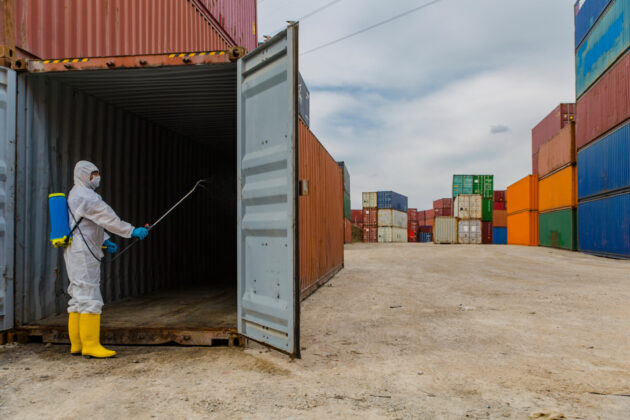Time to rethink the global supply chain
If supply chain weren’t already a boardroom topic, it quickly became one thanks to Covid-19. One of the most important tests for a supply chain is its resiliency in the face of crisis. Many Canadian companies have supply chains that span not only interprovincial borders, but also international borders. That makes for a lot of links and for a lot of things that can go wrong.

And yet, for the past 30 years or so, very little has gone wrong. Our supply chains have become so efficient they’ve basically become invisible to the millions of Canadians who depend on them to deliver the products they need, when they need them, at prices they can afford.
That came to a halt over the past few months thanks to more than 200 countries and territories reporting cases of the virus and the business disruptions that went with it. Suddenly, finding a loaf of bread or carton of milk on the grocery store shelf wasn’t a certainty. Suddenly, there were concerns about food shortages and a frustrating inability for a few weeks to have an effective supply of protective equipment and test kits.
For products that have a high value relative to their shipping cost, it often makes sense to manufacture them in a lower-cost region – such as Asia, Eastern Europe or Africa – and ship them to where they will be purchased. That’s why our supply chains have become increasingly global.
But, just as supply chains have gone global, there has also been increased use of subcontracting as a way to reduce costs. Global supply chains have become deeply tiered with suppliers drawing upon suppliers. It’s not uncommon today for companies to have four or more tiers of suppliers. And because we’ve enjoyed efficient and relatively inexpensive logistics and transportation, we ended up applying lean and just-in-time production methods on top of all this to support those global supply chains.
Talk of little margin for error.
Until Covid-19, such optimized, low-cost supply chains provided us with a competitive advantage. They were a good thing. Worth striving for. Now they may represent our single largest business risk. And are worth reconsidering.
Small and medium-sized companies – the engine that drives the Canadian economy – are the most at risk. They have the least bargaining power and possibly the least experience in looking for alternate sources of parts or raw materials when a supply chain in a remote part of the world goes dark.
What should we do? Use the lessons learned from the past few months to come up with a better way forward. Begin with considering these three areas:
Supply chain vulnerability: Sure, carrying inventory is a cost, but it’s important to consider how much safety stock you really need, bean-counters be damned. To a complex manufacturing process that requires certification, for example, a supply chain disruption is a clear business threat. Carrying more inventory as safety stock may be well worth it.
Supplier vulnerability: If you don’t regularly assess the financial and operational health of your suppliers, this is a good time to start. Just because a country or region may be opening up again doesn’t mean your suppliers in that region, who may have been closed for weeks or months, will be ready to resume business as usual or ever again. Localizing at least some of your suppliers as a buffer is worth considering.
Eyes on inventory and where it’s positioned: This will help you understand where you have flexibility in products and inventory space so you can better manage through short-term and long-term risks. This is not something you’re going to be able to do with pencil and paper. Adopting technology designed to deliver those business insights is a big part of this. You need to first educate yourself about such technologies and then invest in them.
For as long as this virus is with us – perhaps another year or two – we are likely to live under continuing threats of global supply chain disruptions. Supply chain teams will be tasked to get creative about how they source and store and move products across the country. But that’s the challenge I’m least concerned about because being innovative is exactly what our supply chain professionals are best at.
Have your say
This is a moderated forum. Comments will no longer be published unless they are accompanied by a first and last name and a verifiable email address. (Today's Trucking will not publish or share the email address.) Profane language and content deemed to be libelous, racist, or threatening in nature will not be published under any circumstances.
Great article Lou and so true. There are so many areas of the supply chain that require change and more pragmatic planning.
You are 100 percent right. We must look at the importance of all i items . I remember when I farmed with my father we all planned for 3 months overlap of hay supplies. Straw was a item that because of our limited land base to have our own straw on years when extra straw was available at a good price a extra 7,000 small square bales were put up. We need to planned fuel storage both by government and private companies. A class mate of mine father ran a propane business and stored huge amounts in the off season. When he sold the business the new owners this was a unnecessary expense. The 18 months later Ontario was short of propane. Our leadership in Ottawa is more concerned about a U N. Seat than standing up to China and bringing essential supplies manufacturing back to (Canada) North America.